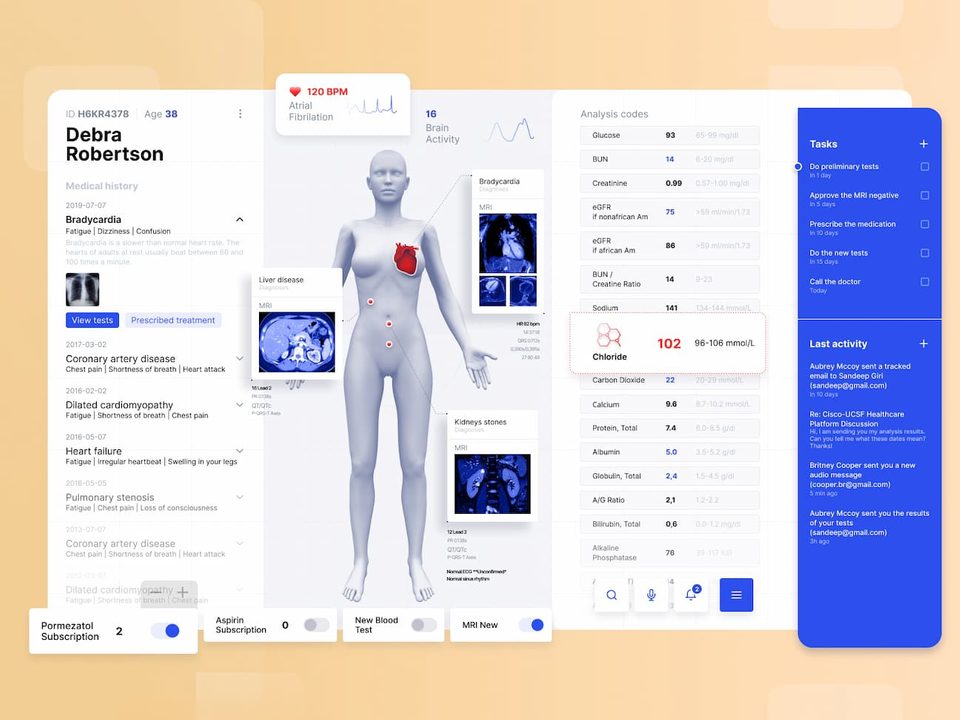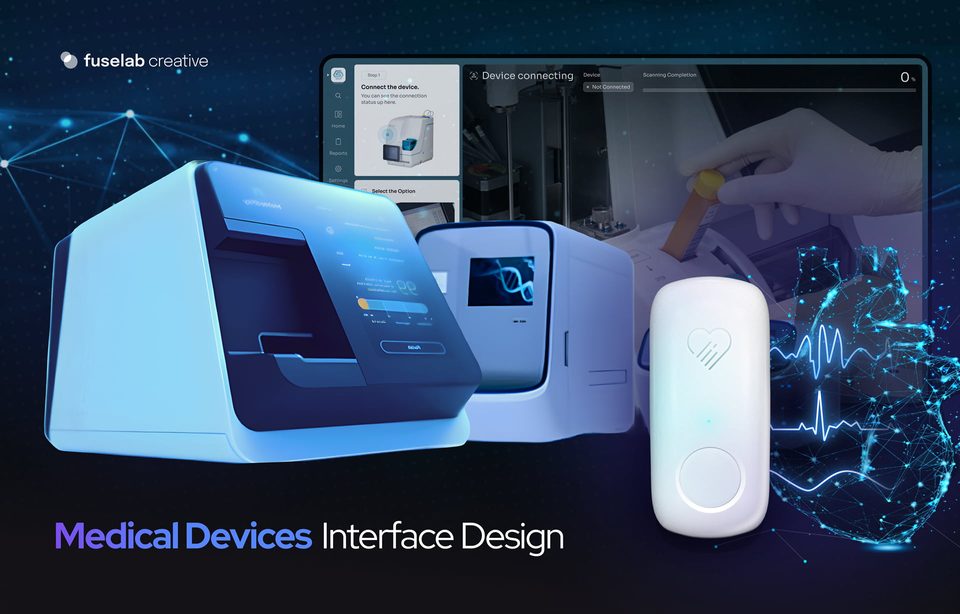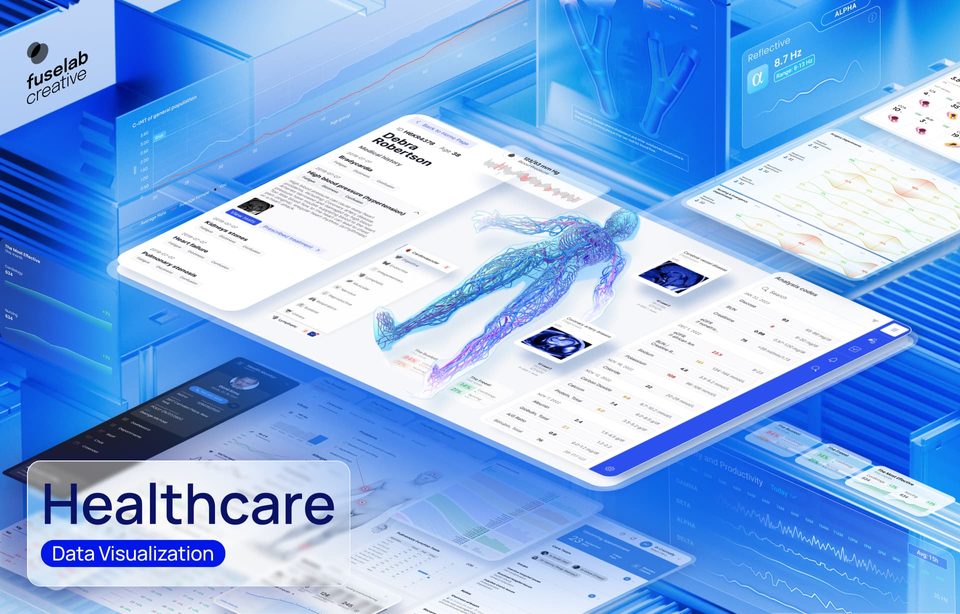Medical And Healthcare Application Design: Considerations and Challenges

Healthcare App Design
Between the development of brand-new innovations and modern upgrades to the traditional way of doing things, modern technology is evolving at a rapid pace. Just as we get accustomed to one thing, we are introduced to something newer and — hopefully — better.
FinTech apps have upended the banking industry and forced traditional banks to adopt mobility, while the restaurant industry has had to develop faster on-demand food services and modernize its online delivery systems. The various social media platforms we use today had to focus their attention on developing new ways for users to communicate online while addressing the issues that come with that.
This rapid evolution has been disrupting industries around the world for years, but during the COVID-19 pandemic — when the need for better and faster digital solutions became essential — this disruption turned into a complete change in how we do everything, from shopping for groceries to our regular 9-to-5 jobs.
But nowhere has the pandemic had more of an impact on how things are done than in the healthcare industry. As we can see from the State of Mobile in 2019 report by data.ai (formerly App Annie), medical apps were already popular before the pandemic, with 400 million global downloads of medical apps in 2018 and consumer spending on health and fitness apps growing 3x from 2016.
The rapid growth of the medical app design industry
Then came April 2020 and the “beginning” of the pandemic. And the downloads of health and fitness apps surged from 565 million to 811 million in the second quarter of 2020 alone. According to data.ai’s State of Mobile 2021 report, this impressive growth continued with health and fitness app downloads increasing by 30% compared to 2019 (2.6 billion) and over 71,000 health and fitness apps being released globally during 2020.
We can see that this explosion of medical apps has stabilized somewhat in the last year, with data.ai’s State of Mobile 2022 report finding that the total downloads for health and fitness apps reached 2.48 billion in 2021. From meditation apps to what is becoming known as “femtech” or apps related to feminine health, consumers are turning to mobile solutions to keep entertained, connected, informed, and healthy more than they ever have before.
Check our Bearn Enterprise health app design project
What this trend of the increasing popularity of mHealth doesn’t show, though, is how unique it is compared to other industries where mobile apps and solutions have become more prevalent. From basic legal requirements such as HIPAA to the sheer amount of data a single patient generates, to the main purpose of an app, to ensuring accessibility for all potential users — there are a lot of factors involved when designing a healthcare app, UI/UX, and graphics.
Medical apps can revolutionize healthcare, but designing and developing these apps has particular considerations that need to be kept in mind and require a distinct skill set. This is what our experience with medical app UI design and healthcare web application design has taught us.

What is mHealth exactly?
As you get into discussions about telehealth, medical apps, remote patient monitoring (RPM), and the best color palettes for healthcare apps, you may encounter the term mHealth and not quite understand where it fits into the whole picture. The first part you should know is that telehealth is considered a catch-all term that covers RPM as well as other methodologies and technologies that make remote care possible.
mHealth, on the other hand, refers to a specific way of using mobile technology to achieve improved health goals. The World Health Organization defines mHealth as “the use of mobile wireless technologies for public health.” The definition of mHealth by the National Institutes of Health goes a little deeper, stating that it is “the use of mobile and wireless devices (cell phones, tablets, etc.) to improve health outcomes, health care services, and health research.”
What that effectively translates to is that mHealth refers to a set of apps, devices, and connections that allow a user to access healthcare in a variety of ways while being mobile.
Types of medical apps
Before we get deeper into the development of medical apps and healthcare mobile app design, it is a good idea to be aware of some of the types of healthcare apps that you may encounter today.
mHealth apps
These are mobile applications that the average person would be most familiar with. They employ various functionalities built into smartphones for medical purposes. Some examples of the features they may use to measure a user’s well-being include their phone camera, speaker, microphone, GPS, or accelerometer. They are effectively turning a smartphone into a medical device.
Patient data management
These are software and apps that health providers would be familiar with; however, there are versions of these services that the average person may use to review their medical data. They include things like database software specifically for doctors, centralized systems for patient monitoring in hospitals, and electronic health records or EHR software.
Care management software
This type of medical app became particularly popular during the pandemic when lockdowns and social distancing made traditional healthcare difficult. It covers things like telemedicine apps, apps for communicating with doctors, appointment booking software for doctors or healthcare providers, and patient portals.
Remote patient monitoring apps
This type of software or app is related to patient data management, patient analysis, and patient-generated data. Wearable devices and health trackers like fitness or sleep trackers and technology used for remote health monitoring systems would fall under this category.
Read also about enterprise application design.
The top challenges of medical app development and design
We mentioned that there are certain considerations that medical app developers have to keep in mind when building apps for both patients and doctors. Here are the two top challenges they face.
The security of mHealth apps is a serious concern
The 2020 Security Report on Global mHealth Apps by Intertrust revealed that 71% of medical and healthcare apps have at least one serious vulnerability that could result in medical data being breached. This report was based on their investigation of 100 publicly available mHealth apps across a range of categories, including telehealth, COVID-tracking, medical devices, and more.
As most mobile apps don’t encrypt their data, it is relatively easy for unauthorized parties to access this information. And when the black market value of medical records was as much as $250/record in 2018, there is a high probability of those unauthorized parties being malicious actors. Add in regulations designed to protect the security of personal information, such as HIPAA, GDPR, and PIPEDA, and a breach could end up costing you more than just the loss of consumer trust.
Lack of interoperability in healthcare
One of the biggest challenges that the medical app industry faces is healthcare interoperability, even though the seamless exchange of data has become a lot easier to accomplish. There was a time when the idiosyncrasies in the communication protocols of different systems made it difficult to send and receive information, but that has mostly been overcome these days.
Information blocking, on the other hand, has always been and still is a serious challenge — despite the US Department of Health and Human Services (HHS) releasing new regulations to give patients unprecedented access to their health data. The challenge today is implementing the relatively new and untested Fast Healthcare Interoperability Resources (FHIR) data exchange protocols while also complying with the United States Core Data for Interoperability (USCDI) regulation.
Considerations before the development of a medical app begin
We have explained what mHealth apps are and listed some of the types of medical apps. You are aware of some of the challenges you may encounter when developing a medical app, so the process of designing your medical app can begin. But there are certain things you need to consider before the first line of code is written.
Keep in mind that these considerations are very closely tied together, and a decision about one may affect a decision you already made for another.
Define the purpose of your healthcare app design
Not only are there different types of medical apps, but there is also a wide range of categories of medical apps that include:
- Fitness
- Lifestyle management
- Nutrition and diet
- Disease management
- Women’s health (femtech)
- Medication adherence
- Healthcare providers/payors
- And others
While you may have dozens of similar apps in each of those main categories, these too can be divided into subcategories of their own. Each of these subcategories has its factors to consider, such as whether you will need access to APIs and which of the hundreds of APIs available today will achieve what you’re looking for.
Integrating multiple APIs is not impossible, but it is difficult and can have an impact on the cost of developing your app. It may even affect the user interface design of your app. Certain types of apps will have to comply with privacy and HIPAA regulations as well. That is why defining the exact purpose of your app and the features you want to offer is essential to the planning process.
Read also about transportation app UI/UX design best practices.
Choose your tech stack
Now that you’ve finalized the details of what you want your app to do, you can start choosing your tech stack. For those who aren’t app developers and don’t know what a tech stack is — your tech stack is all the technology that will need to be combined to build your application. These separate pieces are “stacked” together to build an application that is easy to maintain and also scalable.
App developers who have experience in the medical app industry will know which tech stacks are needed to implement the features your app needs, as well as the extra features you want. They will also be up to date on all the technology currently being used to develop healthcare apps. And they’ll know exactly how easy or difficult it will be to maintain your app and keep it updated once it’s been launched.
Learn more about how to choose a mobile app development company.
Understand your users
This is one of the things that makes the design of medical app UIs so difficult. Most app developers can design their apps with a specific type of user in mind. They’ll narrow these down by several factors such as age, job, nationality, gender, relationship status, and more. But that’s impossible with medical apps as everyone needs healthcare, and their healthcare needs are as unique as they are.
This diversity exists from the healthcare providers’ side as well. Nurses fresh out of college are more accustomed to using their mobile devices for just about everything. So, learning to navigate around an app is generally easy for them. However, that may not be the case with a doctor who has been practicing for decades and has less experience with mobile technology.
What patients will want from an app versus what healthcare providers will want from an app also differs. This is another reason why defining the purpose of your app is so important. What pain point are you trying to address, and how can you ensure that your solution is accessible to anyone and everyone who may want to use it?

Integrate current technology into your app
Several current and emerging technologies are proving beneficial to the healthcare industry. There are thousands of mHealth apps available today. Knowing what these technologies are could be what sets your app apart from them. And finding creative ways to apply and integrate these technologies can establish your app as a leader in the field.
- Cloud technologies – These have many benefits that include cost savings, improved efficiency, scalability, easier integration, automation capabilities, high-security standards, and more.
- AI or machine learning (ML) – AI has capabilities that include predictive analytics, assisting with decision-making and treatment prescription, as well as automating mundane or repetitive tasks. There are also virtual assistants for the transition from home to hospital care and more. In short, what AI and ML can bring to the healthcare industry as a whole is expanding every day.
- Video conferencing – Almost everyone has some experience with using an app like Zoom, thanks to social distancing and lockdown measures. With video conferencing capabilities, doctors can be more flexible with appointments, expand their geographic coverage, and see more patients in less time, among others.
- IoT technologies – The Internet of Things (IoT) has expanded what information doctors have access to and how they collect data, whether it’s wearable sensors to track vital indicators or technology to help monitor medical equipment such as oxygen pumps and defibrillators, etc.
Conclusion
Mobile technology is changing how healthcare systems all around the world function. Wellness and fitness apps are no longer the total of medical apps. Instead, the definition of medical apps has expanded and grown into providing more innovative and helpful ways for patients to access and better manage their healthcare.
Another way they are helping is by easing the strain on an industry that has been hit hard in the last few years. As the technology expands and gets more innovative, we will also see improved costs, accessibility, better patient experiences, coverage, and overall better outcomes concerning patient health.
We’ve seen these changes for ourselves here at Fuselab Creative, and we’ve been helping various clients in the healthcare industry implement digital-first solutions and take advantage of everything that mobile technology has to offer with our digital product design services.

